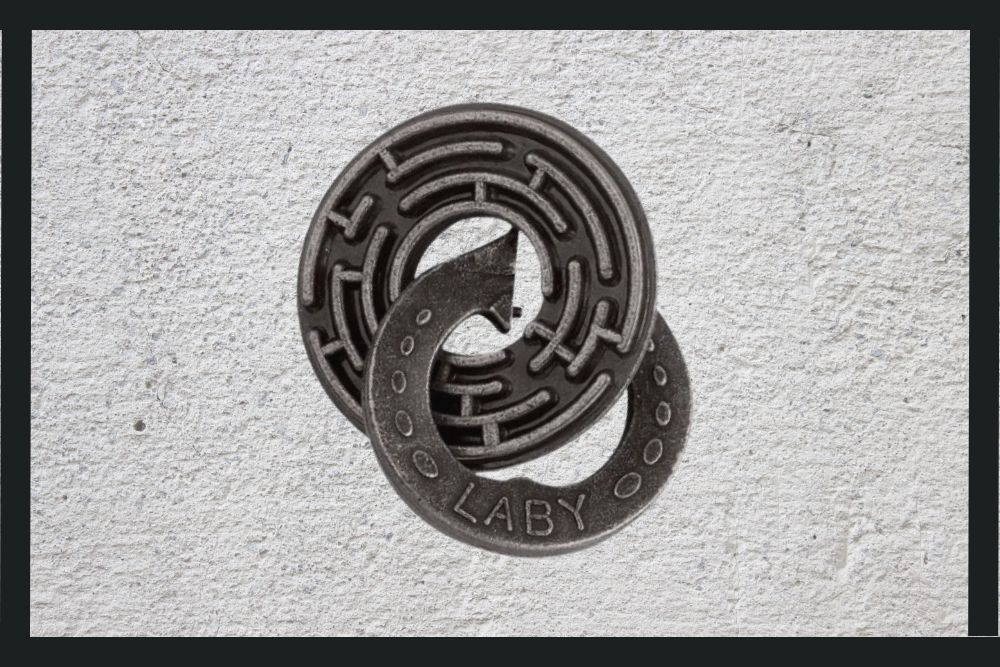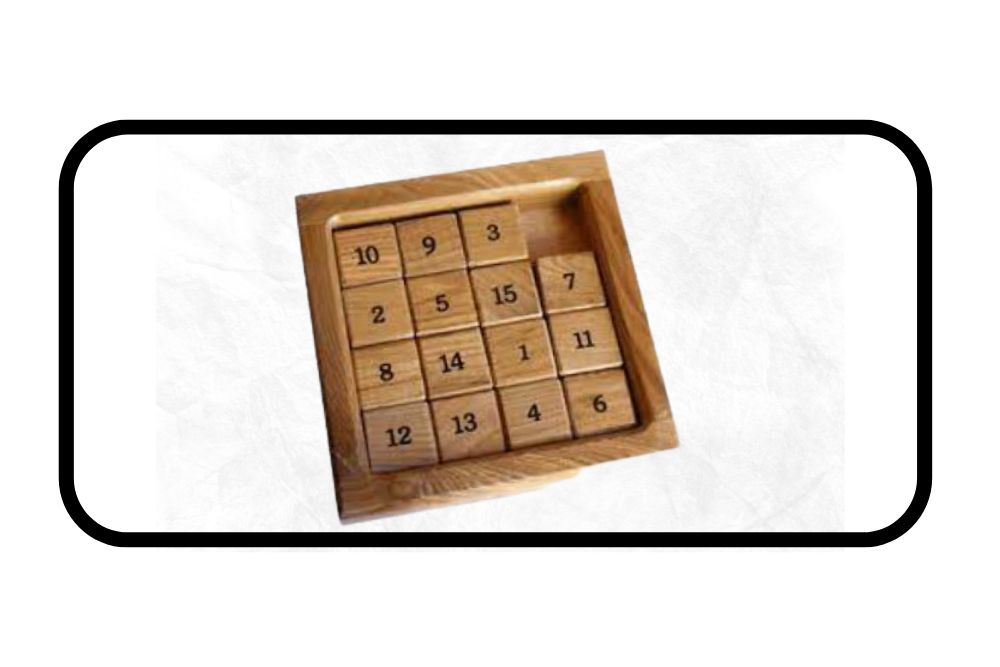For puzzle enthusiasts, the Hanayama Labyrinth puzzle is an intriguing and challenging option. This elegant, cast metal puzzle offers a unique design with the purpose of disassembling and reassembling each piece to solve the maze.
In recent years, Hanayama Labyrinth puzzles have gained a devoted following, inspiring camaraderie and friendly competition among collectors and puzzle solvers.
To successfully navigate a Hanayama Labyrinth puzzle, one must demonstrate patience, focus, and a keen eye for detail.
Each puzzle consists of multiple interlinked parts, which must be separated to find the correct path through the maze.
By analyzing the structure and identifying the individual components, solvers can develop strategies for breaking down the pieces and unraveling the labyrinth’s intricate path.
Learning how to solve a Hanayama Labyrinth puzzle can be a rewarding journey, providing not only bragging rights among fellow puzzle enthusiasts but also a sense of accomplishment upon reaching its solution.
With dedication, practice, and attentiveness, anyone can conquer the challenge that this fascinating puzzle presents.
Understanding the Labyrinth Hanayama Puzzle
The Labyrinth Hanayama Puzzle is a complex and intriguing metal Hanayama puzzle, designed by Vesa Timonen.
It consists of two intertwined pieces that need to be separated and then reassembled.
The puzzle is rated as a level 5 out of 6 on the Hanayama difficulty scale, making it a challenging but enjoyable experience for enthusiasts.
At first glance, the Labyrinth puzzle may appear to be composed of random twists and turns. However, upon closer inspection, one can notice a series of notches and grooves that allow the pieces to move and interact with each other.
The key to solving the puzzle lies in understanding these vital features and using them to guide the two pieces apart.
To familiarize oneself with the puzzle’s design, it is helpful to first examine the individual components:
- Notches: These small indents in the metal allow for one part to slide alongside another and serve as key interaction points between the two pieces.
- Grooves: These wider channels provide a path for the notched sections to follow as they traverse the puzzle’s structure.
- Holes: Small openings in the metal create opportunities for the pieces to change directions and access new paths.
When approaching the Labyrinth Hanayama Puzzle, it is crucial to stay patient and focused. Unlike many puzzles that can be brute-forced by trial and error, this one requires keen observation, pattern recognition, and a systematic approach.
Starting with a good understanding of the puzzle’s design, a solver can begin to examine the labyrinth’s intricate pathways and unlock its secrets.
Familiarizing with the Puzzle Pieces
Before attempting to solve the Labyrinth Hanayama puzzle, it is essential for the solver to familiarize themselves with the individual pieces.
This will help them gain an understanding of how each part interacts with the others, and will make the solving process smoother.
First, they should spend some time studying the overall shape and design of the pieces. This can be achieved by laying the pieces out before them, and turning them over in their hands.
They should take note of any unusual features or grooves, as these may play a pivotal role in the solving process.
Next, the solver could try to categorize the puzzle pieces by function. By doing this, they can achieve a better understanding of which pieces are likely to connect together.
Some common types of pieces they may encounter in the Labyrinth puzzle include:
- Pins: Small cylindrical parts that hold other pieces in place.
- Sliding pieces: These move along a track, typically helping to connect or separate other pieces.
- Turnable pieces: As the name suggests, these parts can be turned or rotated to different positions.
After familiarizing themselves with the different types of pieces, the solver may want to practice moving the pieces to better understand their motion range.
This can help identify any potential traps or pitfalls they may encounter while solving the puzzle.
It’s important during this stage not to force any pieces, as this can damage the intricate design of the puzzle.
It’s not uncommon for the Labyrinth Hanayama puzzle to have pieces with a deceptive appearance. Some pieces may look identical, but have subtle differences.
Therefore, paying close attention to the fine details of each piece will be invaluable when it comes to putting the puzzle back together again.

Step-by-step Solution Guide
Initial Steps
Before attempting to solve the Labyrinth Hanayama puzzle, it is essential for the solver to understand its structure. This puzzle consists of two intertwined pieces, and the objective is to separate and reassemble them. Start by identifying the key elements of the puzzle:
- Two intertwined pieces
- Multiple points of contact between the pieces
- A central ‘key’ that must be unlocked to separate the pieces
It helps if the solver rotates and examines the puzzle from all angles to identify its key components.
Unlocking the Key Moves
Once familiar with the structure of the Labyrinth puzzle, the solver can move on to unlocking the key moves needed to separate the pieces. First, locate the sliding plates on each piece. These plates are responsible for keeping the pieces locked together. The solver should gently manipulate these plates to slide them apart.
At this point, it is important to proceed slowly and carefully, ensuring that the correct plates are being manipulated. Keep in mind that moving one plate can also cause another plate to move, so be aware of these interactions.
Reassembling the Puzzle
Once the Labyrinth puzzle has been successfully taken apart, the challenge is to reassemble it. To do this, follow the disassembly process in reverse. Start by sliding the plates together at the correct points of interaction.
As the solver moves each plate into place, be mindful of the potential for unintentional movements.
Ensure that each plate and piece are properly aligned before inserting the central ‘key’ to lock the puzzle back together.
With patience and careful observation, the Labyrinth Hanayama puzzle can be both disassembled and reassembled successfully.
Tips and Tricks
When attempting to solve a Labyrinth Hanayama puzzle, it’s essential to keep a few tips and tricks in mind to make the process easier and more enjoyable.
By breaking down the process into manageable steps, as well as understanding patterns and techniques, one can successfully navigate through the intricate maze of the puzzle.
First and foremost, patience is key.
These puzzles are designed to be challenging and might take time to solve.
Instead of getting frustrated or overwhelmed, approach the puzzle with a calm and focused mindset, taking breaks as needed to refresh your perspective.
Observation and understanding the puzzle’s structure are essential. Before attempting to solve the puzzle, spend some time examining its parts and how they fit together. Identify loops, corridors, and narrow passages within the labyrinth.
This will assist in visualizing potential moves and paths to take in order to reach the goal.
Documenting progress can be helpful for those new to labyrinth puzzles.
Use a notebook, a sketch, or even a digital tool to track your progress and any insights you uncover. This allows you to see patterns and avoid repeating mistakes.
Additionally, it can be a great reference for solving similar puzzles in the future.
Lastly, it’s important to learn from the experiences of others. Online forums and tutorials often contain valuable tips and solutions shared by fellow puzzle enthusiasts.
Make use of these resources but avoid relying solely on them, as self-discovery and experimenting are integral to improving one’s puzzle-solving skills.
In summary, solving a Labyrinth Hanayama puzzle requires patience, observation, documentation, and learning from others.
Incorporating these tips and tricks into your puzzle-solving routine can greatly enhance the overall experience and increase the likelihood of successfully solving the puzzle.
Common Challenges and Solutions
When attempting to solve the Labyrinth Hanayama puzzle, enthusiasts often encounter several common challenges.
In this section, a few typical problems and their respective solutions will be presented, ensuring a smoother puzzle-solving experience.
Challenge 1: Difficulty identifying the starting position
Many people struggle to find the starting point of the puzzle at first glance. It is essential to remember that every puzzle piece has a number engraved on it, and they should be arranged in the correct order. The starting position is usually with Piece 1 on the top.
Challenge 2: Separating the first two puzzle pieces
Once the proper starting position is identified, the next hurdle is separating the first couple of pieces. Rotate Piece 1 counterclockwise and then slide it out gently. A slight push while rotation might help to release the pieces more easily.
Challenge 3: Tricky maneuvering of subsequent pieces
With the first two pieces separated, navigation through the labyrinth might seem confusing. It’s crucial to keep track of each piece’s orientation and remember that patience and practice play a significant role in mastering these actions.
A handy tip to aid in solving the puzzle:
- Keep an eye on the notches and grooves of each piece as they guide the direction in which the puzzle pieces need to move.
By addressing these common challenges and implementing the suggested solutions, puzzle solvers are better equipped to tackle the Labyrinth Hanayama puzzle and experience the satisfaction of conquering this intricate brain teaser.
Resources for Further Learning
Aspiring puzzle solvers seeking more information and resources on how to tackle the labyrinth Hanayama puzzle have a variety of options to choose from.
There are countless online tutorials, forums, and videos designed to help understand the nuances of these intricate brainteasers.
YouTube is an excellent platform for finding step-by-step video guides created by other puzzle enthusiasts.
These videos provide visual insights into the inner workings and solution methods for the labyrinth.
Additionally, Hanayama itself has an official website, where detailed solution guides for their puzzles can be found, offering valuable official instructions.
For those who prefer written guides, websites such as Puzzle Master and BoardGameGeek host comprehensive walkthroughs on solving the labyrinth puzzle.
In these guides, experts provide valuable tips and showcase different strategies to approach the puzzle.
Another beneficial resource comes in the form of puzzle-solving communities.
Online forums and social media groups dedicate themselves to providing a supportive space for learners to share their experiences, offer advice, and discuss various challenges related to solving puzzles like the labyrinth Hanayama.
Some popular online communities for puzzle lovers include:
- Reddit’s Mechanical Puzzles Subreddit
- Reddit’s Hanayama Subreddit
- BoardGameGeek’s Hanayama Puzzle Forum
Using a combination of these resources, individuals interested in solving the labyrinth puzzle can develop their skills and understanding to enhance their problem-solving abilities.




